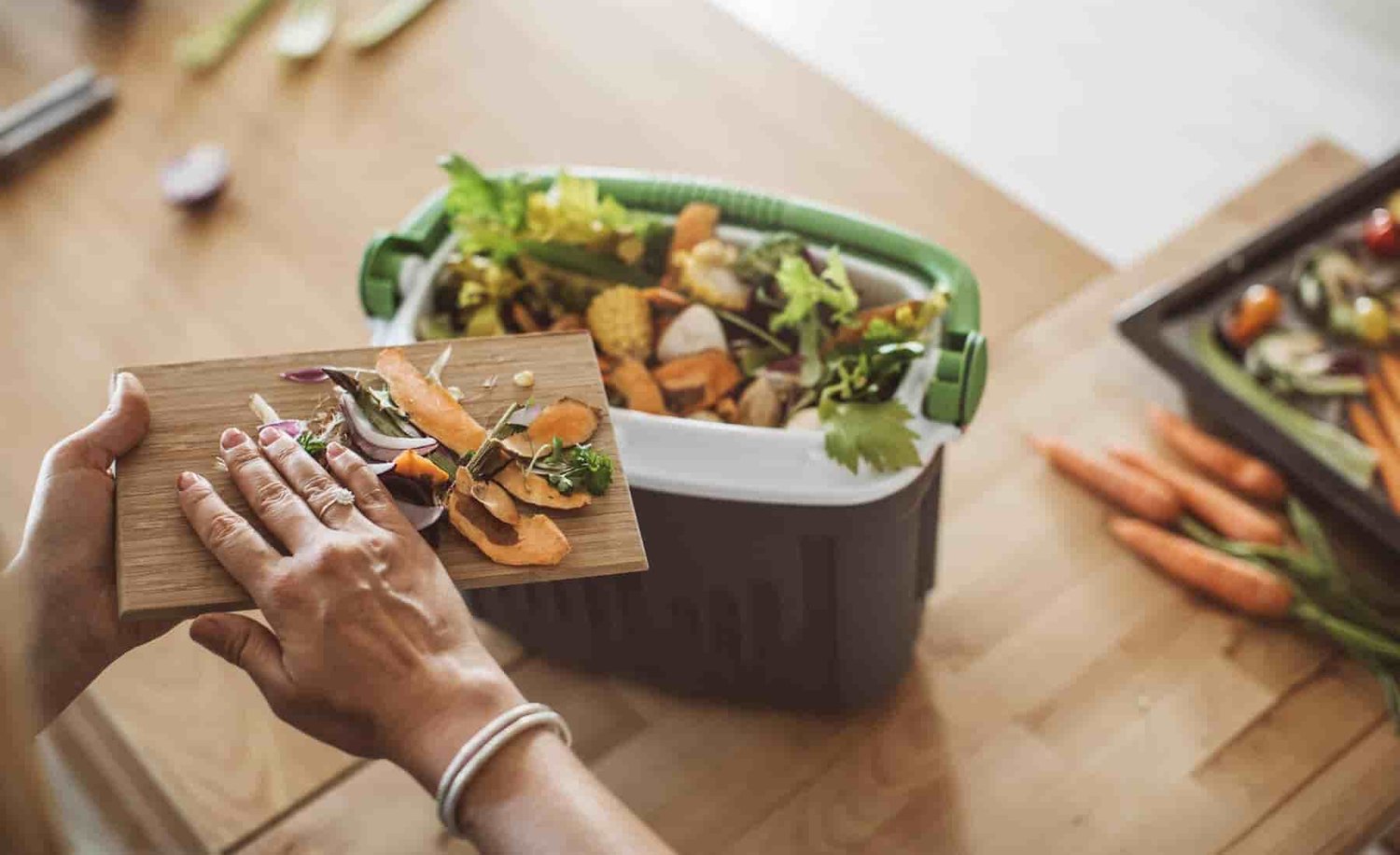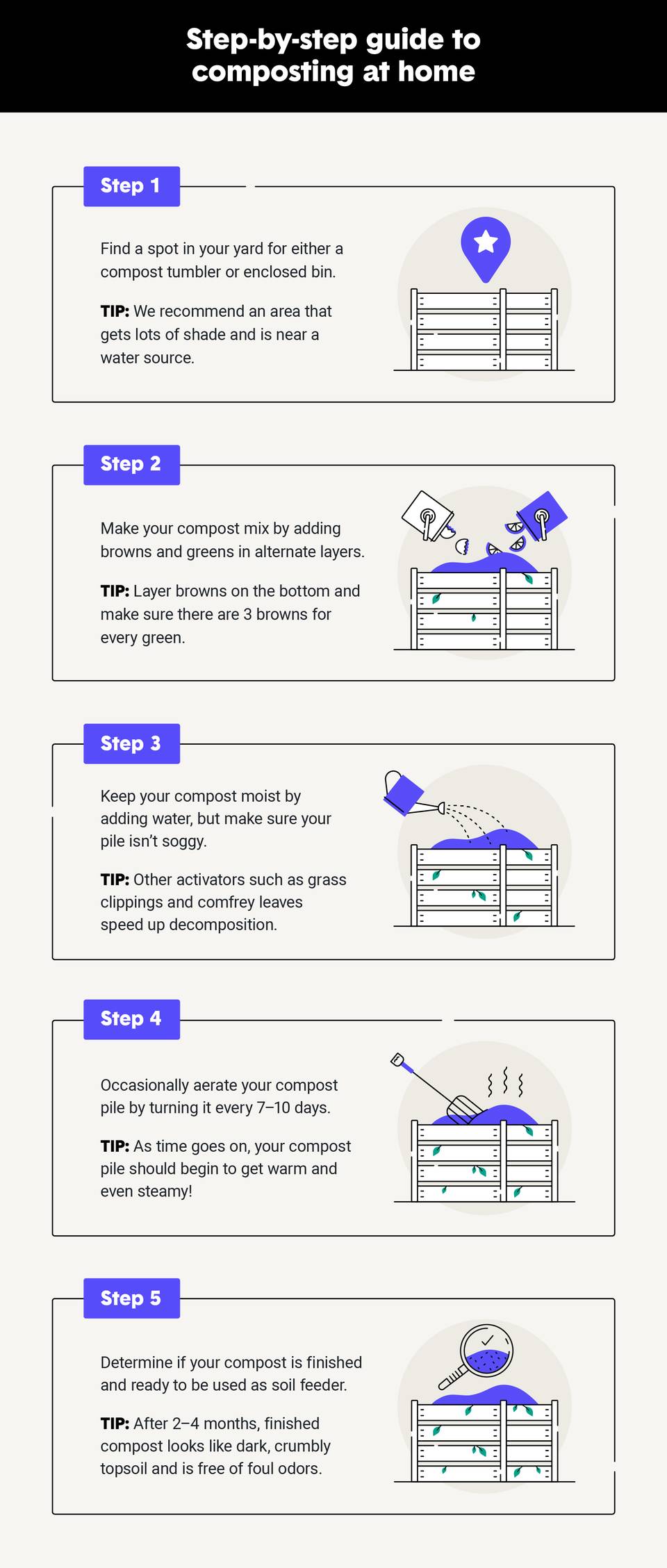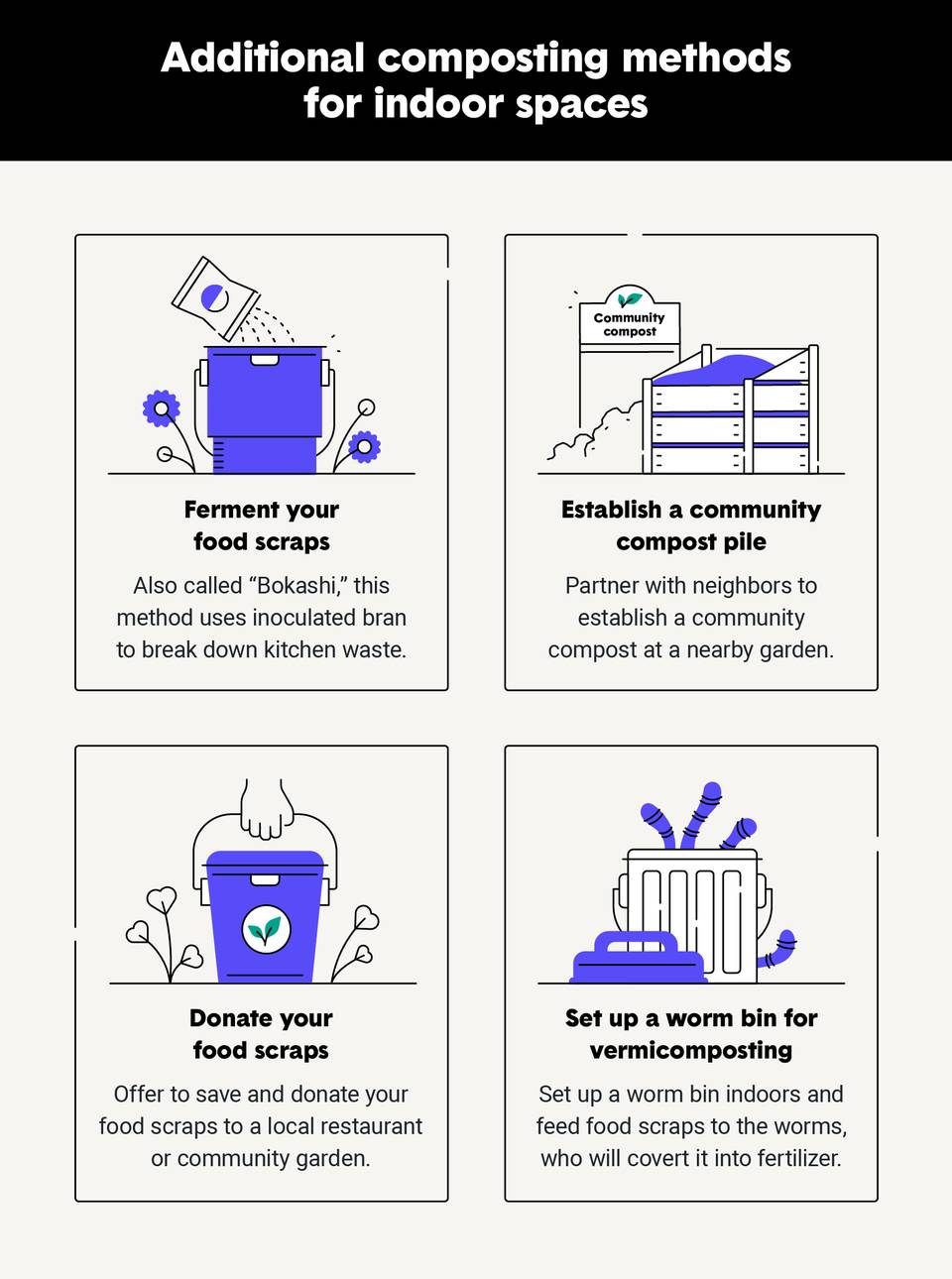Home composting made easy
America produces 254 million tons of garbage[1] each year, and nearly 25% of our solid waste is food scraps. As landfills across America overflow, finding ways to reduce our carbon footprint when it comes to waste is essential.
One great way to reduce food waste while also providing rich nutrients to your garden is to compost. As Americans are spending more time at home right now, it’s the perfect opportunity to start your first composting project. While starting a compost pile or bin at home can seem like a daunting and dirty task, the fertilizer that comes from your kitchen scraps is well worth the fuss.
Whether you live in a home with a large yard or a tiny apartment in a bustling city, composting is a totally customizable, self-guided project that you can scale to your liking. If the thought of red wiggler worms in your kitchen grosses you out, you can take your bin outside or try fermenting!
Our guide will show you how and what to compost, the importance of composting and different methods for both indoor and outdoor composting bins. Keep reading to learn more, jump to our infographic for a visual guide.






